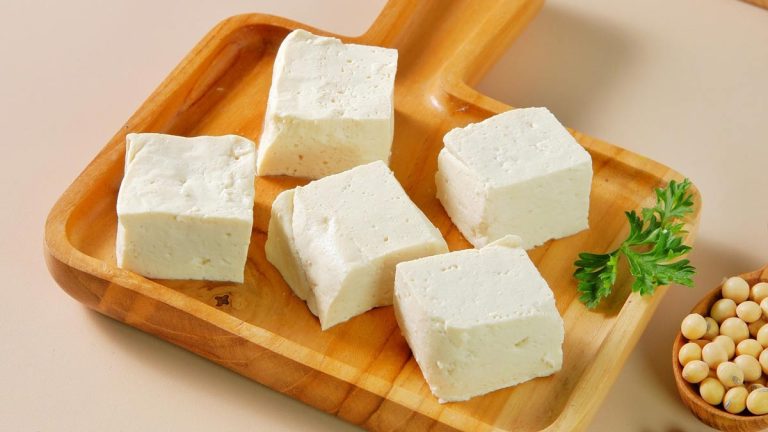Arabica Beans vs Robusta Beans: The Most Significant Differences
Arabica and Robusta beans are the two primary species of coffee beans that are mostly popular among coffee lovers.
Both have noticeable differences in quality, taste, and flavor. The choice between these two comes down to personal preferences and taste buds. This guide will help you to explore the differences between Arabica and Robust beans as well as their advantages and disadvantages.
Arabica Beans vs Robusta Beans: What’s the Difference?
There are some major differences between Arabica and Robusta coffee beans in terms of taste & flavor, shape & color, growing condition, caffeine level, planting, origin, and price.
| Particulars | Arabica Coffee Beans | Robusta Coffee Beans |
| Taste & Flavor | – Fruity, floral, and sweet – Aromatic, smooth, and lighter | – Bitter, nutty, and stronger – Dark chocolate, woody, or oatmeal flavor |
| Shape & Color | – Longer, slimmer, and oval shape – Slightly curved center split line – Lighter brown color | – Shorter and circular in shape – Straight center split lineDark brown color |
| Growing Condition | – Grow higher altitudes in cool climates – Between 15-24 degrees Celsius – Vulnerable to insects and pests – Only grow in a tropical environment | – Grow lower altitudes in warm climates – Between 24-30 degrees Celsius – Non-vulnerable to insects and pests – Grow in both tropical and subtropical environments |
| Caffeine Level | – Contains lower levels of caffeine – Average 1.2-1.5% of caffeine per cup | – Contains higher levels of caffeine – Average 2.2-2.7% of caffeine per cup |
| Planting | – Complex and expensive to plant – Cannot be planted all at once – Need to hand-pick every single cherry – Higher rate of wastage for processing and consumption | – Easy and cost-effective to plant – Can be planted all at once – Can harvest all at once using machinery or pulling a branch – Lower rate of wastage for processing and consumption |
| Source of Beans | – Cultivate in Brazil, Guatemala, Costa Rica, Columbia, and Ethiopia – Needs an average rainfall of 1500-2500 mm per year – Cross-species between Canephora and Eugenides. | – Produced in Vietnam, Indonesia, and Thailand – Needs an average rainfall of 2200-3000 mm each year – Comes from the plant Canephora. |
| Price | – High price for premium quality and processing cost – Average $2-$5 per pound – Mostly used in specialized coffee | – Cheaper due to quality and processing cost Average $1.50-$3 per pound – Mostly used for blend and in regular coffees |

1. Taste & Flavor
Arabica coffee beans offer a nuanced flavor, which can be described as fruity, floral, and sweet. Their enhanced acidity level makes them brighter in taste, and their aromatic, sweet, and smooth texture contributes to distinguished flavors from Robusta coffee beans.
On the other hand, robusta coffee beans are kind of stronger, more bitter, and taste nutty. It contains a low acidity level compared to Arabica beans and brings flavors of dark chocolate, woody, or oatmeal.
2. Shape & Color
Arabica coffee beans are typically longer and slimmer, with an oval shape. The central split line on the Arabica coffee beans is slightly curved and has a lighter brown color than the Robusta coffee beans.
While Robusta coffee beans are shorter, and more circular. The central split line tends to be straighter and darker in color compared to Arabica beans.
3. Growing Condition
Arabica coffee beans grow in higher altitudes with cooler climates, between 15-24 degrees Celsius. They are at risk of damage from insects and pests and need tropical conditions for optimal growth.
On the flip side, Robusta coffee beans can easily grow at lower altitudes in warmer climates, typically ranging within 24-30 degrees Celsius. They are less vulnerable to damage from insects and pests and can grow well in both tropical and subtropical conditions.

4. Caffeine Level
Arabica coffee beans generally contain lower levels of caffeine compared to Robusta coffee beans. On average, Arabica beans have 1.2-1.5% caffeine content, which is half of Robusta beans. That means the Arabica beans need to be brewed twice to get the exact caffeine like Robusta.
However, Robusta coffee beans boast a higher level of caffeine than Arabica coffee beans, ranging between 2.2-2.7% per cup. It provides a stronger caffeine kick and can be a potential choice for people who require more caffeine.
5. Planting
Planting Arabica beans is considerably more complex and expensive compared to Robusta beans because they cannot be planted all at once. Besides, farmers need to hand-pick every single cherry at different times, which can result in a higher rate of wastage, or not in a better position of processing and consumption.
Conversely, Robusta beans are much easier and more cost-effective to plant than Arabica beans. They can be harvested all at once using machinery or by pulling entire branches, and as a result, minimize the risk of waste and provide higher production for processing and consumption.
6. Source of Beans
Arabica beans are mainly cultivated in Brazil, Guatemala, Costa Rica, Columbia, and Ethiopia. They grow in tropical climates with an average rainfall of 1500-2500 mm per year and they are cross-species between canephora and eugeniodes.
Alternatively, Robusta beans are mainly produced in Vietnam, Indonesia, and Thailand. They can grow both in tropical and subtropical climates with an average rainfall of 2200-3000 mm each year. It comes from the plant Canephora.

7. Price
The price of Arabica coffee beans is generally higher due to their premium quality and the way it is grown and processed. On average, the price of Arabica coffee beans comes in $2-$5 per pound and they are used mostly in specialized coffee.
On another note, the price of Robusta beans is much cheaper compared to Arabica beans due to their greater quantity and lower production cost. The price of Robusta coffee beans comes at an average of $1.50-$3 per pound and they are mainly used for blend and regular coffee.
What Are the Advantages and Disadvantages of Arabica Beans?
Arabica beans stand out as the most premium coffee beans among all other coffee beans, and they are renowned by coffee enthusiasts for their superior quality and taste. Here are some of the advantages and disadvantages of Arabica beans.
Advantages of Arabica Coffee Beans
- High-quality beans, nuanced flavor, and less bitter.
- Low caffeine, suitable for caffeine-sensitive people.
- The natural acidity of Arabica beans provides a bright and lively taste.
- Rich in aroma, enhances overall coffee experiences.
Disadvantages of Arabica Coffee Beans
- Arabica beans are expensive to buy compared to other beans.
- Only grows in high altitudes and tropical environments.
- Non-vulnerable to insects and pests.
- Low crop yields and higher processing costs.

What Are the Advantages and Disadvantages of Robusta Beans?
Robusta beans are widely known for their bold flavor and high caffeine level. It is commonly used in regular coffees and blends for its thick crema and intense flavor. Below are some of the advantages and disadvantages of Robusta beans.
Advantages of Robusta Beans
- Robusta beans contain high caffeine which helps to boost physical and mental health, and increase alertness.
- Vulnerable to insects and pests.
- It can grow in both tropical and subtropical climates.
- Affordable to buy due to low production cost.
Disadvantages of Robusta Beans
- Harsh, strong, and bitter taste. Not suitable for caffeine-sensitive people.
- Low-quality beans with a lack of acidity and aroma.
- Contains a high level of chlorogenic acid (CGA), which creates positive health issues.
- Low demand, only makes up to 25-30% of the global coffee crop.








